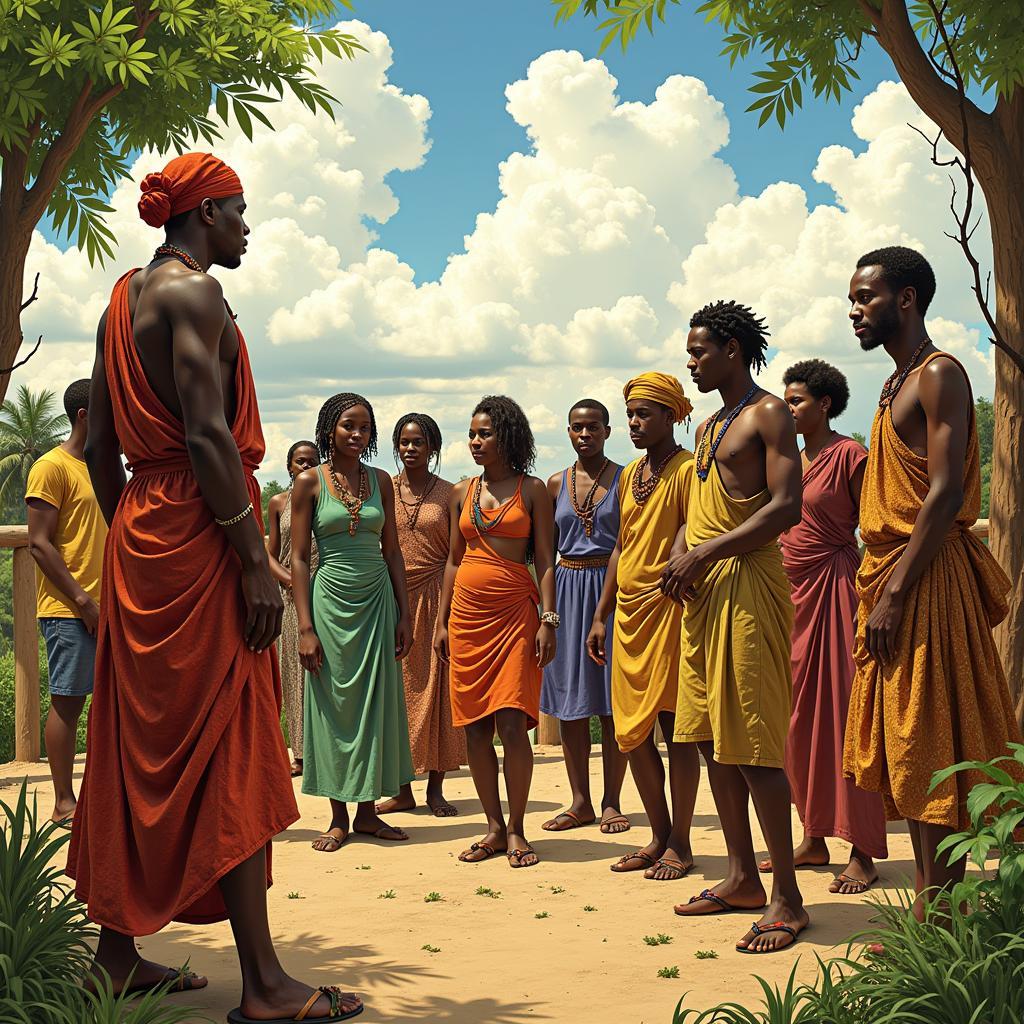African American Men’s Clothing: A Rich Tapestry of Style and Culture
African American men’s clothing is more than just fabric and thread; it’s a vibrant expression of history, identity, and cultural evolution. From the practical garments of enslaved ancestors to the sharp suits of the Harlem Renaissance and the bold streetwear of today, clothing choices have always told a story. This exploration delves into the fascinating journey of African American men’s fashion, uncovering its influences, innovations, and enduring impact.
The Historical Threads of African American Men’s Clothing
The history of African American men’s clothing is deeply intertwined with the African diaspora and the experience of slavery in America. Early garments were often simple and utilitarian, reflecting the harsh realities of forced labor. However, even within these constraints, expressions of personal style and cultural heritage emerged. The use of vibrant colors, patterns, and adornments, when possible, served as subtle acts of resistance and a connection to ancestral roots. Following emancipation, access to a wider range of fabrics and styles allowed for greater self-expression, paving the way for the development of distinct sartorial traditions within the African American community.
The rise of Black tailoring and craftsmanship in the late 19th and early 20th centuries played a crucial role in shaping African American men’s clothing. Skilled tailors created bespoke garments that reflected the aspirations and achievements of a newly freed people. This era also saw the emergence of influential figures like Booker T. Washington, who advocated for economic empowerment and self-reliance, often reflected in the dignified and professional attire he promoted.
The Harlem Renaissance and the Evolution of Style
The Harlem Renaissance of the 1920s and 30s marked a pivotal moment in African American cultural and artistic expression, and this vibrant energy extended to fashion. The zoot suit, with its high-waisted trousers and long coat, became a symbol of rebellion and cultural pride. This era saw a flourishing of creativity and individuality, as African American men embraced bold patterns, luxurious fabrics, and accessories that defied conventional norms. Check out more on african clothing history.
From Civil Rights to Contemporary Style
The Civil Rights Movement of the mid-20th century brought about a renewed focus on African identity and heritage, which influenced clothing choices. The dashiki, a colorful, loose-fitting garment originating from West Africa, became a powerful symbol of Black pride and solidarity. This period also saw the rise of influential figures like Malcolm X, whose sharp suits and distinctive style projected an image of strength and self-determination. Perhaps you can find an african dashiki near me.
From the vibrant colors and patterns of traditional African attire to the sleek lines of modern streetwear, African American men’s clothing continues to evolve, reflecting the multifaceted nature of Black identity and culture. Hip-hop culture, with its emphasis on individuality and self-expression, has had a profound impact on contemporary men’s fashion, from baggy jeans and oversized hoodies to designer sneakers and bold jewelry. Check out african gal for more inspirations.
What are some key influences on African American men’s clothing?
African heritage, the experience of slavery, the Harlem Renaissance, the Civil Rights Movement, and hip-hop culture are all key influences.
How has African American men’s clothing evolved over time?
From practical workwear to tailored suits, zoot suits, dashikis, and contemporary streetwear, the evolution reflects changing social and cultural contexts.
What is the significance of the dashiki in African American culture?
The dashiki represents Black pride, cultural heritage, and solidarity, particularly during the Civil Rights Movement.
Conclusion
African American men’s clothing is a powerful testament to resilience, creativity, and cultural evolution. From the earliest days of forced labor to the vibrant expressions of contemporary style, clothing choices have always been a reflection of identity, aspiration, and social change. The rich tapestry of African American men’s fashion continues to inspire and influence the global landscape of style. It reflects not only a history of struggle and triumph but also a vibrant and ever-evolving cultural narrative. Consider exploring the style of african flamboyant men.
FAQ
-
What is the significance of the zoot suit? A symbol of rebellion and cultural pride during the Harlem Renaissance.
-
How has hip-hop influenced African American men’s clothing? It has popularized streetwear, including baggy jeans, hoodies, and sneakers.
-
What are some examples of traditional African garments worn by African American men? Dashikis and various patterned shirts and robes inspired by West African traditions.
-
Where can I find contemporary African American designers? Many online platforms and boutiques specialize in showcasing Black designers.
-
How can I incorporate elements of African American style into my wardrobe? Start with small accessories or incorporate key pieces like a dashiki or patterned shirt.
-
What are some resources for learning more about African American fashion history? Museums, books, and online archives offer valuable insights.
-
How does African American men’s clothing reflect identity? It reflects a complex interplay of heritage, cultural influences, and personal expression.
For further assistance, please contact us at +255768904061, email kaka.mag@gmail.com, or visit us at Mbarali DC Mawindi, Kangaga, Tanzania. Our customer service team is available 24/7.


